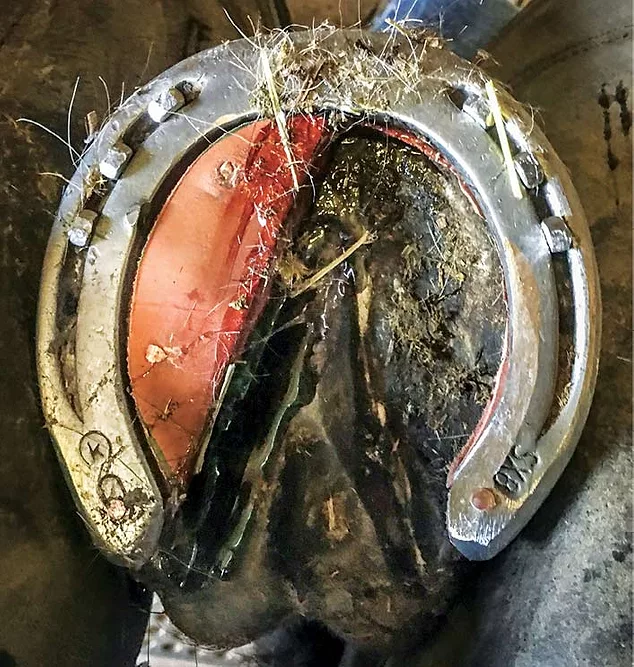American Farriers Journal
American Farriers Journal is the “hands-on” magazine for professional farriers, equine veterinarians and horse care product and service buyers.

Backyard horses deserve the same quality care as equine athletes. Dean Moshier worked on a horse with a lateral collateral ligament tear in which he narrowed the medial branch, added a rim pad, then added a second pad to bring it to the height of the shoe. He applied Vettec Soft to seal out debris. Photo: Dean Moshier
Backyard horses comprise a significant portion of some farriers’ businesses and can be a very successful and profitable part if handled correctly.
Prince Frederick, Md., farrier Patrick Quinn didn’t aspire to provide hoof care for backyard horses, but this is often the bread and butter of a farrier’s operation.
“These are your best clients; they are the people whose places you enjoy being at with their horses,” he says. “You are not in a big barn with all kinds of owners — some of whom don’t know you, where it’s more impersonal. It’s often a more relaxed atmosphere and informal relationship with the backyard horse owner. These folks become your friends and they trust you to be their expert in caring for their horses’ feet and hoof health.”
Dean Moshier, in Delaware, Ohio, has more than 450 horses on his roster — from backyard horses to top-level show horses — and does a lot of therapeutic shoeing, but owners of…